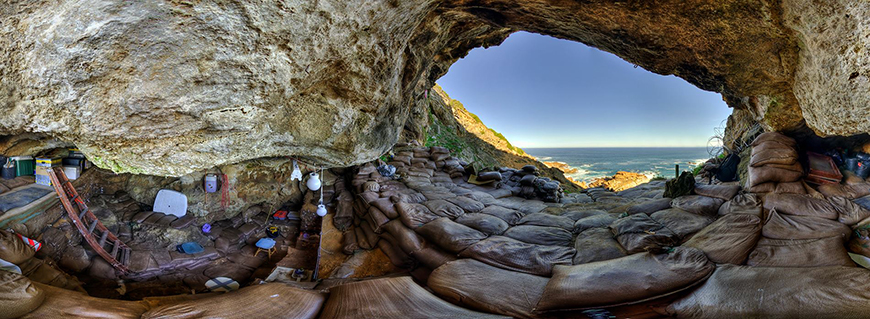Using high tech to tell the story of ancient man
- Wits University
Origin Centre's new Virtual Reality experience uses state of the art communications technology to tell the story of what makes us human.

The history of where we come from and what makes us human will come alive like never before when the Origins Centre, located at Wits University, launches its new Virtual Reality production at the Tshimologong Precinct on 14 September, and at the Origins Centre on 25th September, (a public holiday).
The production, which brings together cutting-edge digital technology with stories of ancient stone age technologies of our 2,6-million-year history, tells a complete story of our development into society, by using the same visual materials that are used by scientists in the research process.
“This is the first time that VR has been used in Origins Centre at Wits, and the first production of the archaeology and palaeontology stories that are told in the Museum, using photographs, text panels, casts of human ancestral skulls and real stone tools,” says Steven Sack, Director of the Origins Centre.
The production, which was made possible through a collaboration between Sack and Professor Barry Dwolatzky, Director of Tshimologong, has been facilitated by the Rock Art Research Institute, the Evolutionary Sciences Institute and the South African Rock Art Digital Archive, that are all located at Wits University. The National Institute for the Humanities and Social Sciences has supported two young researchers, Dr Tammy Hodgkiss and Lara Mallen, to lead the content development.
“The VR experience immerses viewers in a journey through time, from the African early hominin fossil skulls, significant changes in ancient tool use, and the innovations of the Middle Stone Age, to the captivating spirit world of southern African San rock art. You will follow in the footsteps of the researchers who are solving the mysteries of Africa’s rich past,” says Dr Tammy Hodgskiss of the Evolutionary Studies Institute, and an expert in this field of research.
The Origins VR production will be used to update the material currently on display at the Origins Centre and will assist in bringing younger voices and women researchers into the story of what we know about rock art and the early modern human ways of living.
“Tshimologong is Wits University’s exciting new digital innovation precinct in Juta Street, Braamfontein. The VR production was developed by Alt-Reality, one of the start-up companies we are incubating. It will be launched as part of the annual Fak’ugesi Festival we host in Tshimologong,” says Dwolatzky, who has personally funded part of the production.
The production involved a collaboration between VR production house AltReality and archaeologists Tammy Hodgskiss (Evolutionary Studies Institute, Wits) and Lara Mallen (Origins Centre). The music score has been created by Jill Richards, with indigenous instruments performed by Mpho Molikeng.
Barry Dwolatzky (Director of Tshimologong) and Steven Sack (Director of Origins Centre) have had lengthy discussions about how to connect the work of Tshimologong with that of the Origins Centre and Dwolatzky has donated some of the funding himself to enable this production. The National Institute of Health Stroke Scale (NIHSS) also contributed through a programme at the Origins Centre that they have funded, which looks for ways to diversify narratives.
The VR installation will make part of a permanent display at the Origins Centre. It will launch at the Origins Centre on 25th September 2017.
Details
Fak’ugesi launch
Date: 14 September 2016
Time: 12h30
Venue: Tshimologong Digital Innovation Hub, Braamfontein
Origins launch
Date: 25 September 2017
Time: 10:00 – 16:HOO
Venue: Origins Centre, Wits University

